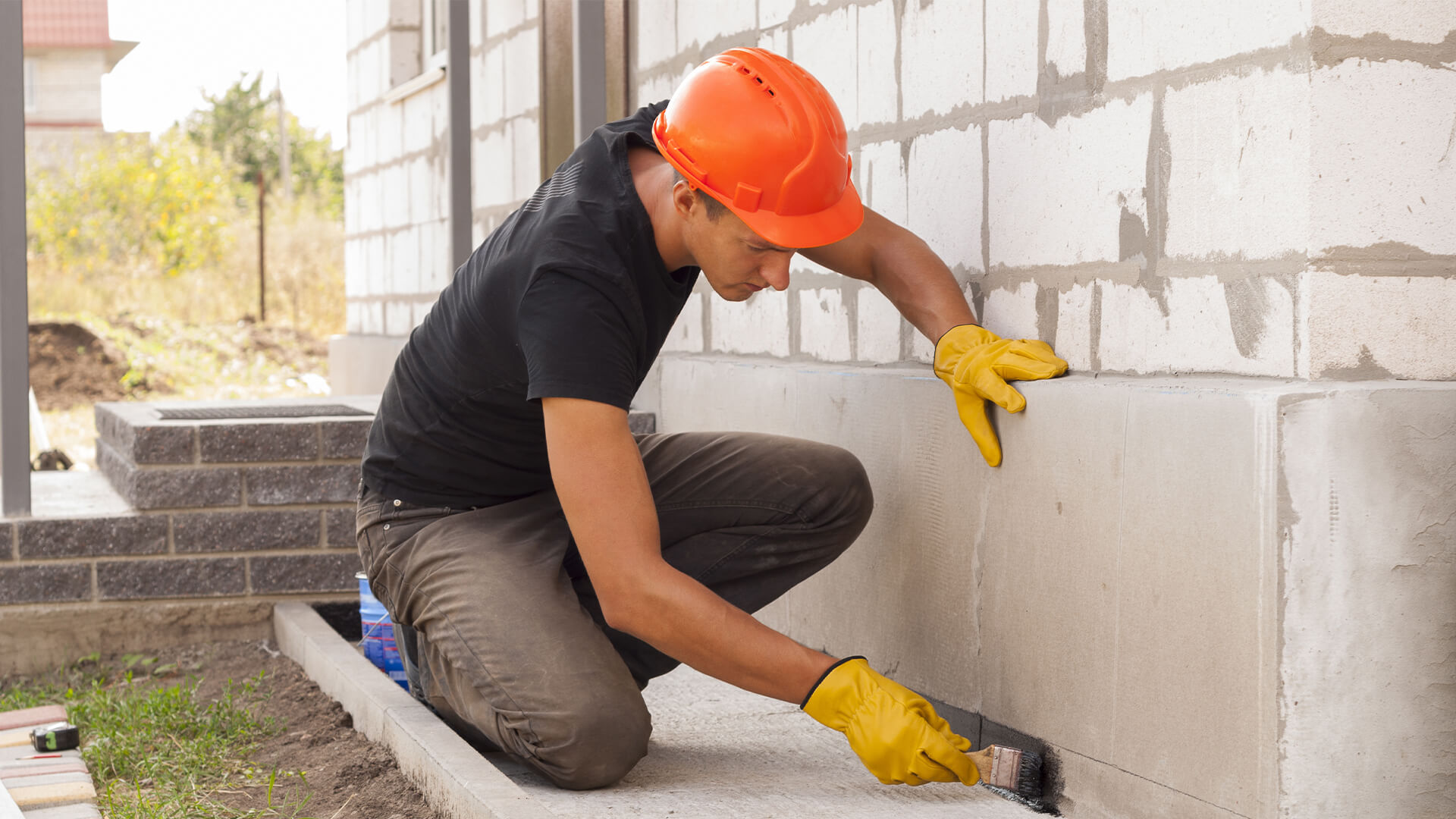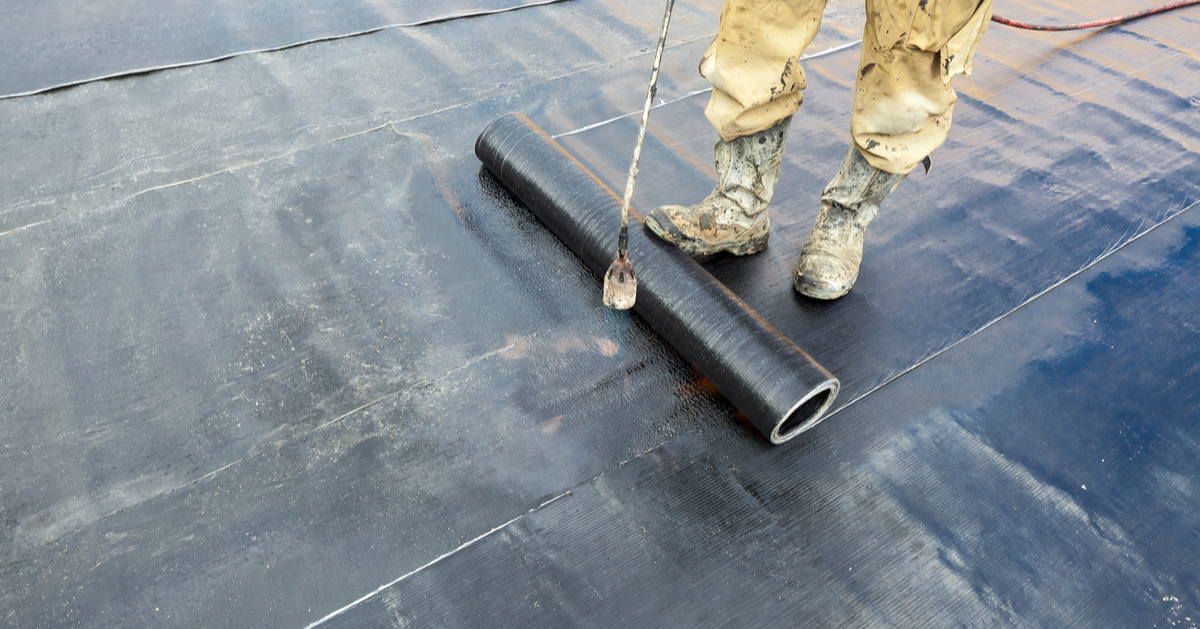How Yard drainage Omaha Boosts Property Value Instantly
How Waterproofing Functions: A Comprehensive Look at Strategies and Technologies
Waterproofing is crucial for securing frameworks from moisture-related damages. It involves numerous techniques and technologies that produce barriers against water invasion. Conventional methods, such as compacted clay, exist together with modern developments like liquid-applied membrane layers. Comprehending the nuances of these methods is important for efficient application. The performance of any type of waterproofing option hinges not just on the techniques used however additionally on ongoing maintenance and examination. What are the vital factors that affect long-term performance?
Comprehending the Basics of Waterproofing
Waterproofing is an important procedure that shields structures from water invasion, which can result in substantial damage in time. This technique includes the application of numerous products and techniques developed to develop a barrier against moisture. The primary objective is to avoid water from passing through surface areas, which can cause deterioration, mold and mildew development, and architectural instability.Various factors influence the selection of waterproofing approach, including the kind of structure, its location, and environmental problems. Comprehending the physics of water motion and the properties of different materials is critical in picking a reliable waterproofing solution.Effective waterproofing not just safeguards buildings but also improves their durability and integrity. Usually, it is incorporated right into the design stage of building and construction to assure thorough defense. As awareness of water-related issues grows, the significance of comprehending waterproofing principles ends up being progressively clear to architects, home builders, and homeowner alike.
Traditional Waterproofing Techniques
Traditional waterproofing techniques have been utilized for centuries, depending on time-tested techniques and materials to secure frameworks from water damages. One of the earliest techniques entails using clay, which, when compressed, produces a natural obstacle versus moisture. In addition, bitumen, a sticky, black product derived from oil, has been employed for its water-resistant residential or commercial properties, frequently used to roofs and foundations.Another technique involves the application of lime-based plasters, which provide a breathable layer that allows moisture to escape while avoiding water access. Thatch roofing, a traditional technique still seen in some cultures, supplies outstanding waterproofing as a result of its tightly loaded straw layers.Moreover, using stone and block has actually been famous, as these products are inherently immune to water when correctly set up. Generally, typical waterproofing approaches stress the value of picking proper products and construction practices to boost toughness against water breach.
Modern Waterproofing Technologies
Advancements in contemporary waterproofing modern technologies have revolutionized the way structures are protected from water damages. Innovative methods such as liquid-applied membranes and advanced sealants have enhanced the effectiveness and adaptability of waterproofing solutions. These innovations enable seamless application, lowering the danger of leaks and making certain detailed protection over complex surfaces.Moreover, the integration of clever technologies, such as dampness sensors and automated monitoring systems, makes it possible for real-time evaluation of waterproofing efficiency. This proactive approach facilitates prompt upkeep and decreases long-lasting repair service costs.Additionally, improvements in spray-applied coverings offer fast application and excellent bond, adjusting to different substratums while providing durable defense. Methods like polymer-modified systems even more boost adaptability and longevity, making them ideal for diverse environments. Generally, modern waterproofing technologies not just minimize water intrusion yet also contribute to the longevity and sustainability of structures, marking a significant shift in the sector.
Materials Used in Waterproofing
The efficiency of waterproofing options heavily counts on the products used in their application. Different materials are employed to produce barriers against water ingress, each with one-of-a-kind buildings suited for various settings. Commonly used products include membrane layers, finishes, and sealants.Liquid-applied membrane layers, often made from polyurethane or acrylic, develop a seamless barrier that adapts to complicated surface areas. Sheet membranes, commonly created from rubber or thermoplastic, deal resilience and are excellent for bigger areas. Additionally, cementitious waterproofing products, composed of cementitious compounds, provide outstanding attachment and flexibility.Sealants made from silicone or polyurethane are vital for joints and joints, ensuring detailed protection. In addition, advanced materials, such as geo-composite membranes, integrate several features, boosting performance. Generally, the selection of waterproofing materials is vital in attaining resilient and effective water resistance, tailored to certain job needs and ecological problems.
Typical Applications of Waterproofing
Waterproofing plays a vital role in numerous fields, making certain the durability and integrity of structures. Typical applications consist of household remedies that protect homes, business facilities that safeguards businesses, and commercial setups that require robust defense versus moisture. Comprehending waterproofing walk in shower these applications highlights the significance of waterproofing in preserving both safety and security and functionality throughout different environments.
Residential Waterproofing Solutions
Lots of homeowners face obstacles with dampness intrusion, making efficient household waterproofing solutions vital. Different approaches exist to address this issue, including inside and outside waterproofing systems. Interior solutions typically entail the application of sealers and coatings to cellar wall surfaces, which aid protect against water infiltration. Outside methods usually include the installation of drainage systems and water resistant membrane layers that divert water away from the foundation.Additionally, homeowners might take into consideration sump pumps to eliminate water buildup and dehumidifiers to manage moisture levels. Proper grading and making use of rain gutters also play a vital function in managing water flow around the home. By implementing these methods, property owners can substantially decrease the threat of water damage and mold and mildew development, making sure a dry and risk-free living atmosphere.

Business Framework Protection
Efficient waterproofing services play an important role in the protection of business framework. French drain installation Omaha. These methods are essential for guarding structures, vehicle parking frameworks, and bridges from water damages, which can compromise structural integrity and cause expensive repair work. Typical applications include the installment of membranes, finishes, and sealants that produce barriers versus dampness infiltration. Locations such as basements, roofings, and exterior wall surfaces are often prioritized to ensure longevity and toughness. In addition, waterproofing systems can enhance energy effectiveness by preventing water-related issues that may lead to mold and mildew growth and damage. By carrying out durable waterproofing steps, residential property owners can safeguard their financial investments and maintain operational performance, eventually adding to the overall sustainability of commercial facilities
Industrial Applications Overview
While different fields encounter one-of-a-kind challenges, shower waterproofing the requirement for trusted waterproofing options continues to be a continuous in commercial applications. Industries such as production, building, and energy frequently come across environments where moisture exposure can endanger structural honesty and functional efficiency. In making facilities, waterproofing is essential for protecting equipment and materials from water damages. In construction, it safeguards foundations and cellars versus groundwater infiltration. The power sector relies upon waterproofing for the defense of tools in hydroelectric plants and offshore frameworks. In addition, food handling sectors More Bonuses make use of waterproofing to assure health and conformity with safety and security standards. Generally, efficient waterproofing remedies are necessary for boosting sturdiness, security, and performance across numerous industrial settings.
Upkeep and Longevity of Waterproofing Solutions
Waterproofing services are developed to offer long-lasting defense against wetness invasion, regular upkeep is vital to assure their performance and longevity. Regular examinations play a significant duty in identifying possible concerns such as fractures, peeling off, or indications of water damages. Addressing these troubles quickly can avoid additional degeneration and pricey repairs.Additionally, cleaning up the surface of waterproof areas aids get rid of dirt and particles that might endanger the honesty of the waterproofing obstacle. It's likewise advisable to reapply protective finishes or sealers as recommended by suppliers to maintain optimal efficiency. Environmental elements, such as UV exposure and extreme weather, can impact the life-span of waterproofing materials, making routine analysis essential
Often Asked Questions
Can Waterproofing Be Applied in Cold Weather Condition?
The inquiry of using waterproofing in winter increases issues regarding bond and healing. Several items might not execute at their finest in low temperature levels, necessitating careful option and consideration of details guidelines for reliable application.
For How Long Does Waterproofing Normally Last?
The period of waterproofing performance differs based upon products and ecological elements. Generally, it can last from 5 to ten years, yet regular maintenance and evaluations are necessary to assure peak performance and long life.
Is DIY Waterproofing Effective and Safe?
The performance and safety and security of DIY waterproofing depend upon various aspects, consisting of worldly top quality and application method. While some people attain satisfactory results, others might encounter issues that jeopardize lasting defense and structural integrity.
What Are the Signs of Failing Waterproofing?
Indicators of failing waterproofing consist of noticeable water discolorations, peeling off paint, mold growth, moldy odors, and dampness in wall surfaces or ceilings - Yard drainage Omaha. These indicators recommend compromised obstacles, demanding timely evaluation and possible remediation to stop further damages
How Do I Choose the Right Waterproofing Service Provider?
